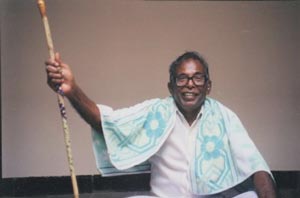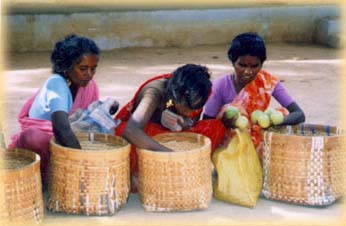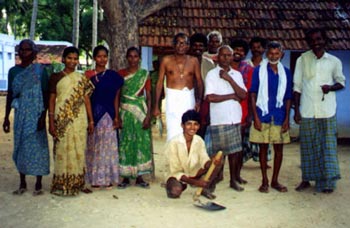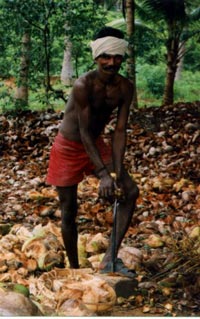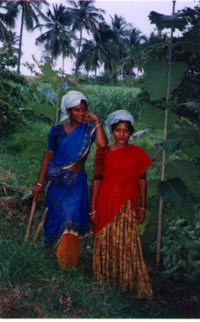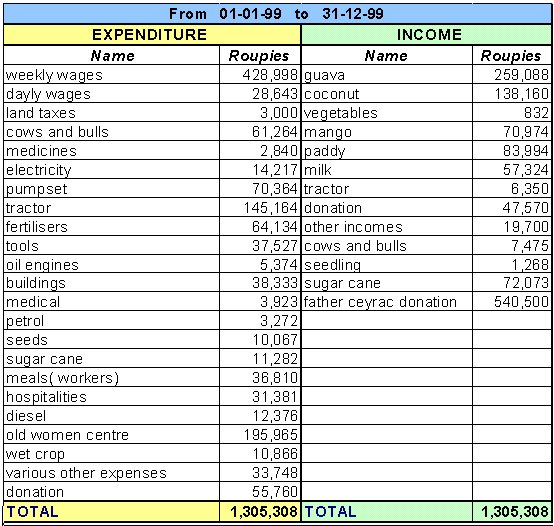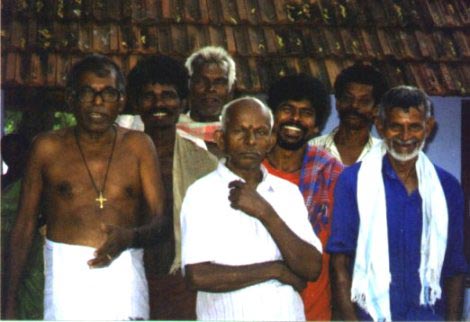
 |
|
* 1967 : a great famine I. THE PROJECT
In the following text Father Ceyrac explains us how began the idea of Model Farm at Manamadurai, south of India. ( Extract from the book Tout ce qui n'est pas donné est perdu !) 1) At the beginning, in 1967 … " Tools
Madamadurai farm was built in 1967. Today, one would strongly insist on the idea of liberation. Yet, at the time of founding it, the first preoccupation was to provide people with food and work. In 1967, indeed, Bihar was devastated by a serious famine, the last of the great famines experienced in India. At that time, I was in charge of the Indian national students movement (AICUF). We thought that we had to do something concrete. "We cannot philosophize in our universities when people near us are starving to death." AICUF thus launched the construction work to build the Manamadurai farm. We thought: "if we can produce, even if it is only 20 tons of rice, it will be a first step". It was a symbolic action: we
didn't want to choose the good land that everybody could cultivate,
but an extremely unproductive land wherein agricultural work would
acquire a symbolic value. Nowadays, delegates from all over India
come to visit us and see what we have done. |
|
2) The right man for the job : Adaikalam Adaikalam
It's Adaikalam who is speaking now. His testimony was originally in Tamul, his mother tongue and translated in English afterwards. "I was born in 1930, in a farmer's family. From my early days, I took part in the various works in the fields. I have been managing this farm for 33 years, based on my experience, while adopting the latest innovations. Manamadurai is located in the Ramanathapuram district, the most remote district in Tamil Nadu, due to irregular monsoons causing droughts. A socio-economic survey was conducted in the 1960's. When he became aware of the misery of the inhabitants of this region, Father Ceyrac wanted to launch a project to help them. That is how the farm was created. Its surface area is 41 ha, i.e. 100 acres. Its 2 aims are: - To be a model farm using all
the technical and scientific innovations, while giving priority
to the respect of human beings. Sale of fruits
Farm unites them beyond the notions of caste, nationality and religion. This place is an example of fight against oppression and injustice. Moreover, every year, young volunteers have the opportunity to have an experience of solidarity with our country. I dedicated my whole life to working for that farm and I intend to do so till the end. In the future, the farm should become an autonomous judiciary entity capable of self-management without any external financial help. In this context, the two aims evoked earlier are obviously complementary." |
|
3) Respect for people |
|
|
Coconuts harvesting
|
Women in fields
|
|
"Here we want to free people, the opposite of paternalism. We always told them: "You are not for the farm, the farm is for you." We never tried to make profits by making people work. We are not a colonialist farm. We want to free people. Manamadurais's great success was, I think, to support a population of respected people. They acquired a dignity previously damaged by poverty."
IV. INCOMES AND EXPENDITURES IN 1999
V. THE DIFFICULTIES ENCOUNTERED According to Adaikalamelles, they are of two or three kinds. Measures have already been taken to solve some of these problems. Nevertheless, a mutual help is still necessary, mostly because of unpredictable weather conditions. § Considering the land's
acreage, fruit are frequently stolen.
Human needs : Farm's workers
§ A specialist of agriculture
and horticulture, capable of bringing new techniques and training
men. The main need being the fruit trees trimming. Material needs: § Agricultural machines
|
|

